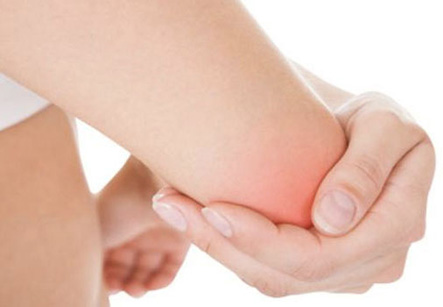Abrasion
Introduction
Abrasions also called as a scrape happen when the skin is rubbed away.
The abrasions usually occur more on some parts of the body such as the hands, elbows, knees and shins. Most common feature of abrasion is tearing of some skin layers. Sometimes, the scrapes are shallow or superficial but some may rub off several skin layers. It is important to treat them immediately. Minor abrasions can be treated at home, although deeper wounds require a physician care.
Simple steps of treating a skin abrasion include assessing the depth of wound, cleaning the wound and maneuvers to help the process of healing.
Generally, minor abrasions heal within a week, but larger wounds may take up to two weeks.
Skin abrasions usually do not bleed excessively instead, might ooze with a pink fluid known as serum. As compared to a simple cut, the abrasion exposes nerve endings and rubs off more skin. As a result, they are more painful. Abrasions tend to occur more commonly in summer and spring months because more skin is exposed and there is vasodilatation of skin. Therefore, the medicines for scrapes should be available at hand during the warmer seasons. Children have more tendencies for skin abrasions because they usually run and play more than adults, increasing the chances of collisions with rough surfaces such as carpet, pavement and roads.
an abrasion is a wound caused by superficial damage to the skin, no deeper than the epidermis

Causes of Abrasion: there are various causes of abrasion like
1. Scratches
2. Accidents
3. Falls
4. Scraping against a rough surface
5. Trauma
6. Bed sores in debilitated patients
7. Injury in sports
Symptoms of Skin Abrasion:
These are:
1. Pain
2. Rash
3. Redness or rubor
4. Swelling
5. Bleeding
Healing of abrasions:
1. After friction with a rough surface, the abrasion may start bleeding. This happens as the injury breaks or tears the small blood vessels just beneath the surface of the skin.
2. The body reacts to this injury by trying to stop the bleeding by signaling the accumulation of platelets in the blood to the wound site.
3. At this site, the platelets stick together to form a clump known as clot which plugs the torn blood vessels and prevents the blood and other fluids from oozing out.
4. Over a day or two, the white blood cells and other mediators form a firm, dry cover on the area of wound called as scab. This scab gives time to the skin for healing.
5. Under the protective covering of the scab, the new cells multiply, damage to blood vessels is repaired and a new skin layer forms at the site of wound. Infection is prevented by white blood cells.
6. As the new layer of skin is formed, the scab falls off. This takes about a week or two. If the scab is picked in between, the wound takes a long time to heal and may leave a scar behind.
Treatment at home:
1. First priority after abrasion is stopping the bleeding. It can be done by pressing a clean, soft cloth against the wound. The wound usually stops to bleed in a few minutes.
2. Wound should be cleaned thoroughly with soap and water to prevent infection. The dirt and gravel should be washed away properly.
3. Clean small wounds heal without any special care. An antibacterial ointment or solution can be applied if the wound is deep. Usually, a triple antibiotic ointment having bacitracin, neomycin and polymyxin B is useful for abrasions. These antibiotics will help to prevent infection and they also make the healing process faster.
4. Then it should be closed with bandage to block any dirt entering the wound.
5. Many people also take a tetanus vaccine shot at this point. This is needed when the scrape has occurred with metal or any rusty object.
Clinic treatment:
When the wound is deep or serious, treatment at doctor’s clinic is required.
1. Animal bite is a special injury. It can spread various viruses from the saliva of animal into the wound. It may be needed to confirm that the animal does not have rabies. Sometimes, rabies vaccine needs to be taken.
2. Rusty objects can have bacteria of tetanus or locked jaw (a very serious disorder). Tetanus shot is necessary in such cases. If it has been already taken, a booster dose may be recommended.
3. If the wound is deep or its edges are far apart, the doctor can stitch the edges together after injecting a local anesthetic medication to numb the area.
4. The stitches are removed after a week in the clinic. It is painless.
5. Sometimes, an abrasion can get infected. In this case, the wound starts hurting and appears red and swollen. It can ooze yellowish or greenish thick liquid called as pus.
Generally, minor abrasions heal within a week, but larger wounds may take up to two weeks.